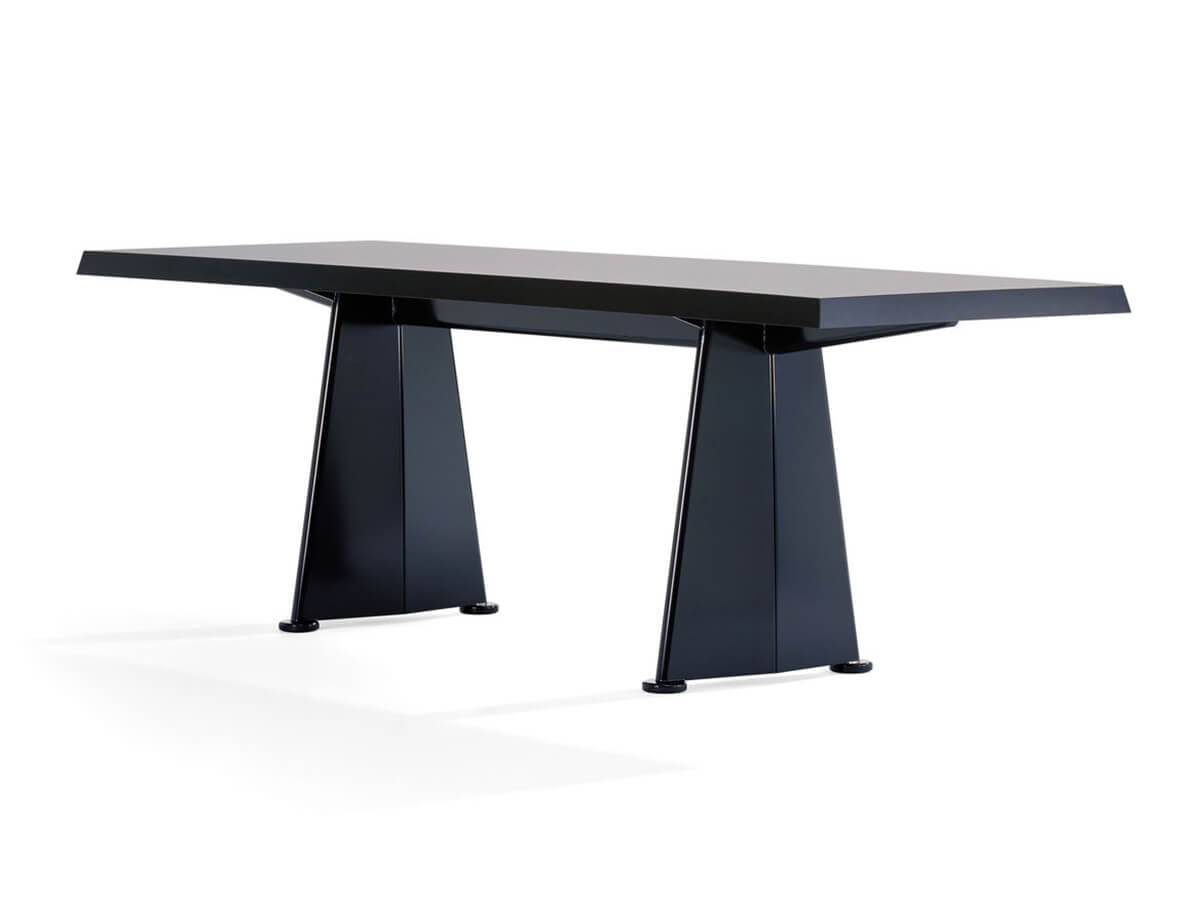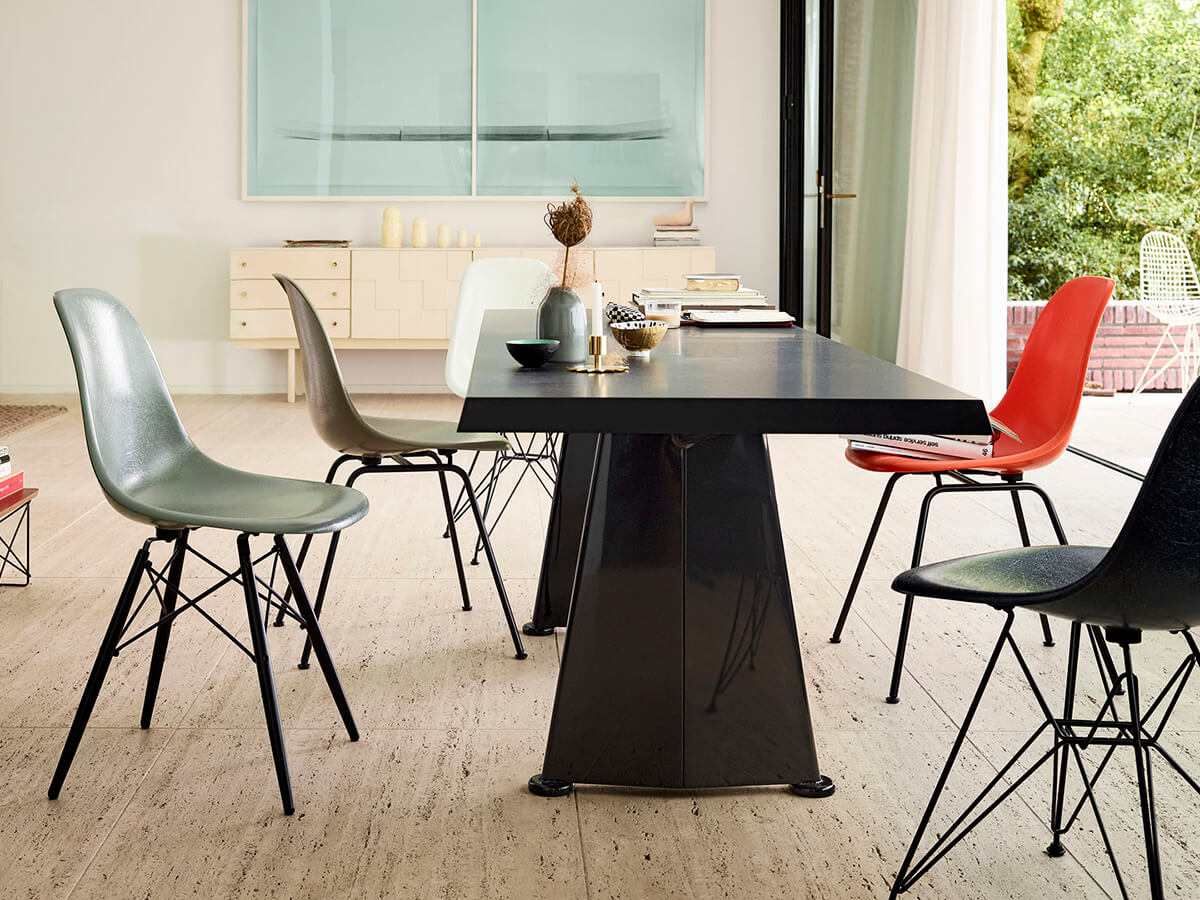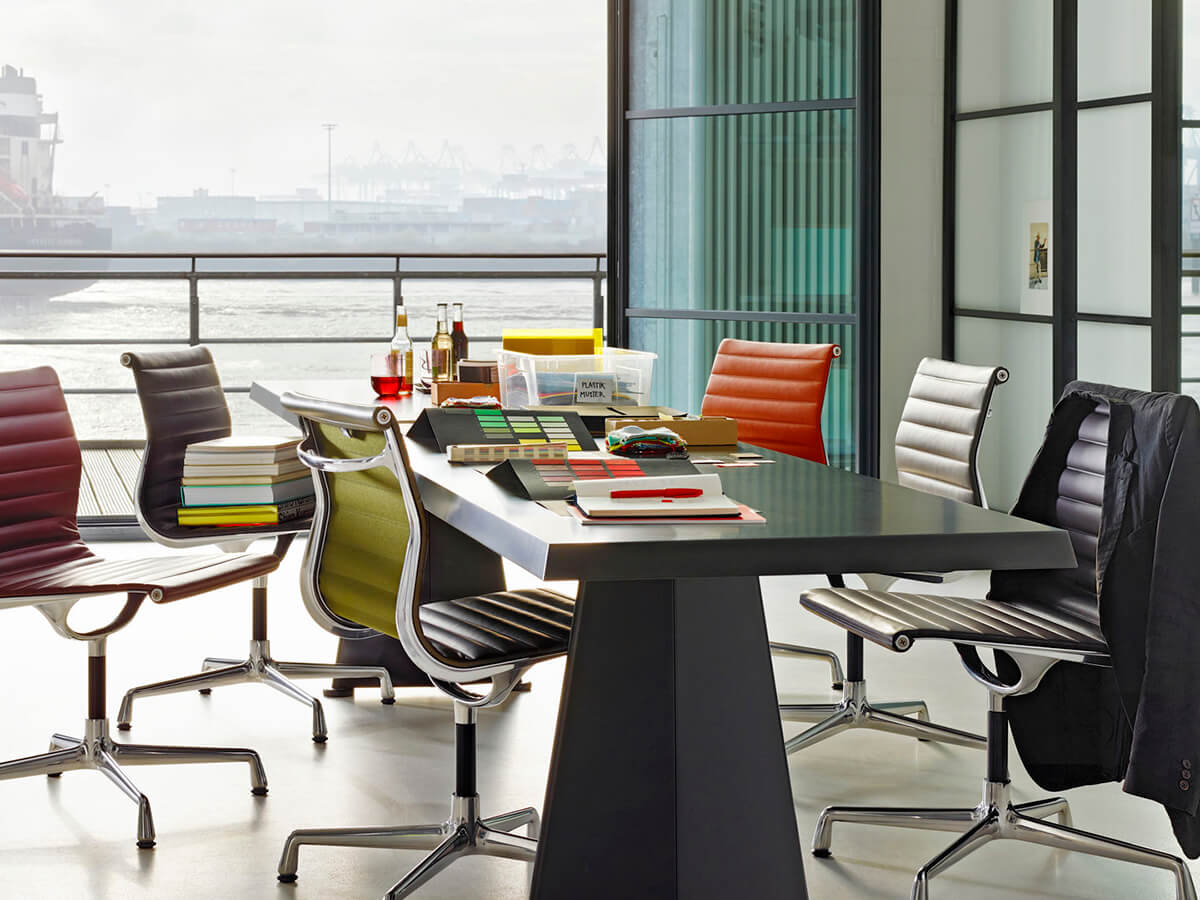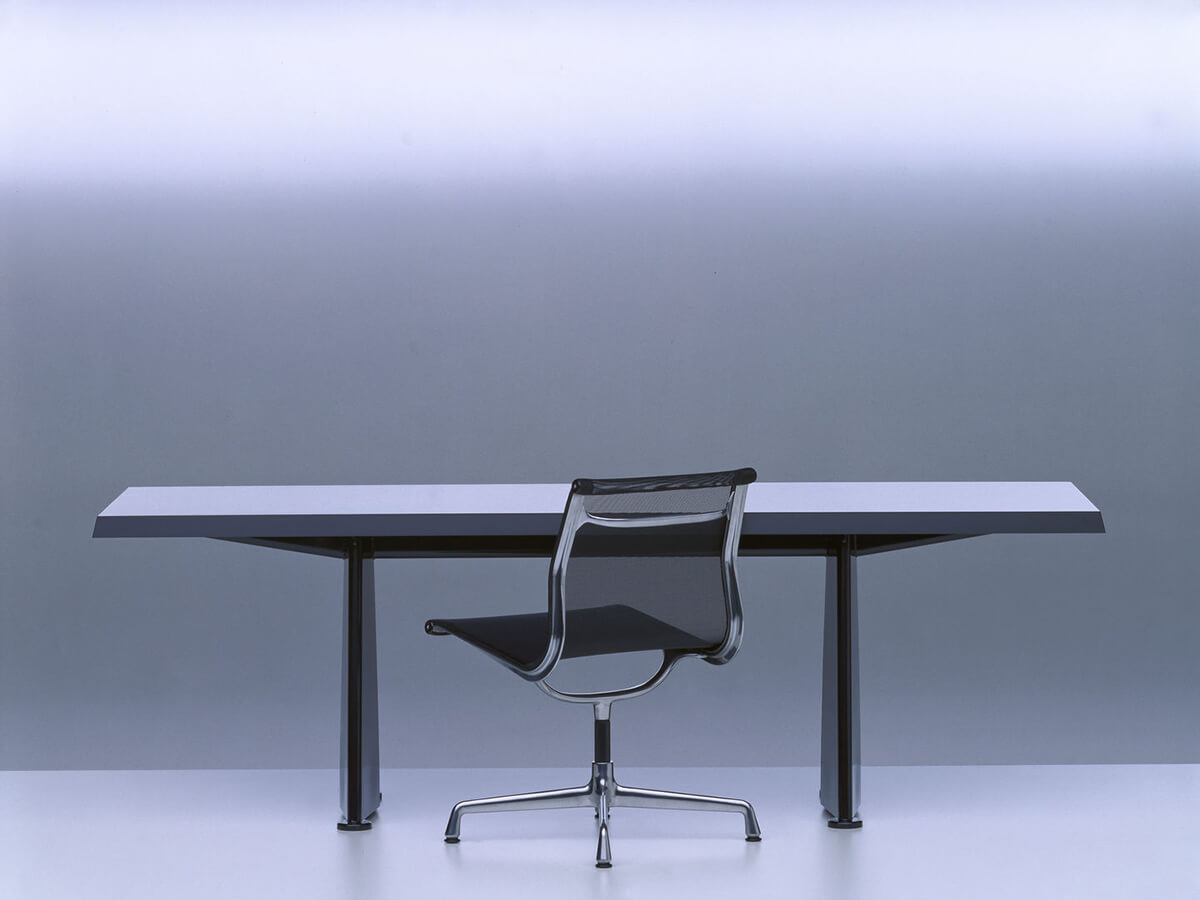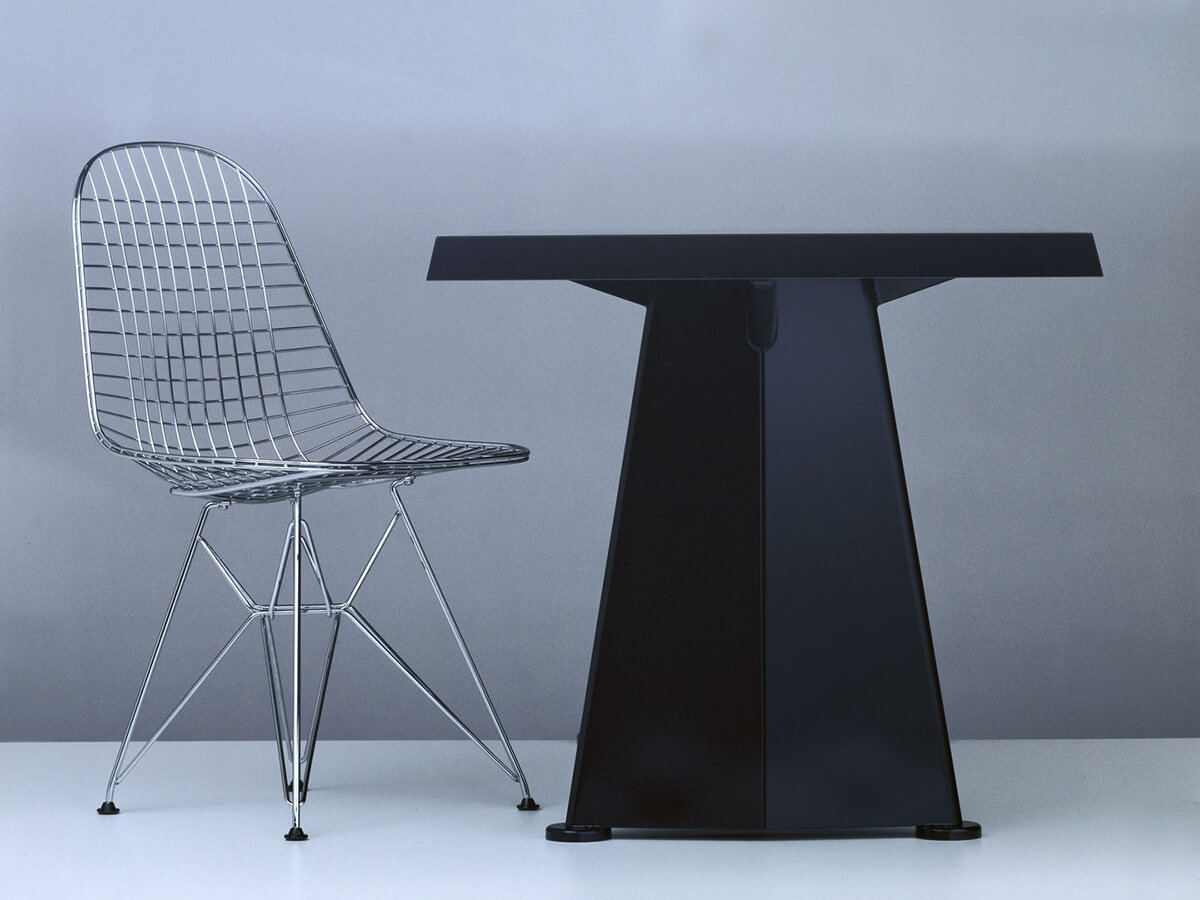Vitra
Trapèze Dining Table
Price € 6.540,00
The Trapèze table was born as a piece of furniture for the Cité Universitaire d'Antony created by Jean Prouvè. Among the many works by the designer, this table stands out for its solid lines and the use of metal designed to outline a figure with a classic flavour that he is not afraid of surprising with modern details. Its massive shape and particularly generous dimensions place Trapèze in large environments such as large living rooms or open spaces where its geometries can be best enhanced. With sculptural simplicity, this model has become an industrial design classic today.
W.223 x D.72,5 x H.72 cm
Salvioni Design Solutions delivers all around the world. The assembly service is also available by our teams of specialized workers.
Each product is tailor-made for the personal taste and indications of the customer in a customized finish and that is why the production time may vary according to the chosen product.
To discover the full range of services available, visit our delivery page.
Select
Select
Select
Swiss by birth, Vitra is a unique company in many ways. Unique in its home collections, light and colorful; unique in its office furnishings, which combine in a masterful implementation design and ergonomics; unique for the designer parterre that enriches its catalog. Among prestigious historical re-enactments and fruitful collaborations, Vitra has always had the ability to relive the past and project to the future. However, Vitra is unique above all for Rolf Fehlbaum's corporate address, where the company transcends the business to fulfill wider social and cultural functions: the creation of a unique project such as Vitra Campus and the annexed Vitra Design Museum is an example.Read more
Designed by
Jean Prouvé
Jean Prouvé (1901-1984) is one of the great names of French design of the twentieth century. Son of the painter and sculptor Victor Prouvé, he was essentially self-taught: he studied as a blacksmith and soon opened his own workshop, drawing the principles of his style from daily practice and work on new technologies. "I am but a worker", he wrote in his autobiography. His art was engineering applied to design: he was a pioneer in the use of sheet steel and aluminum in the creation of furniture and lamps, moving away from the use of the typical tubular of the Bauhaus and going to create his own aesthetic, with an imprint strongly industrial, driven by a constant search for innovation and functionality. Starting in the 1950s, he abandoned his activity in the company and intensified his public presence, eventually chairing the commission that in 1971 chose Renzo Piano and Richard Rogers for the design of the Center Pompidou in Paris. His furnishings have been reissued exclusively by Vitra since 2002.Read more
